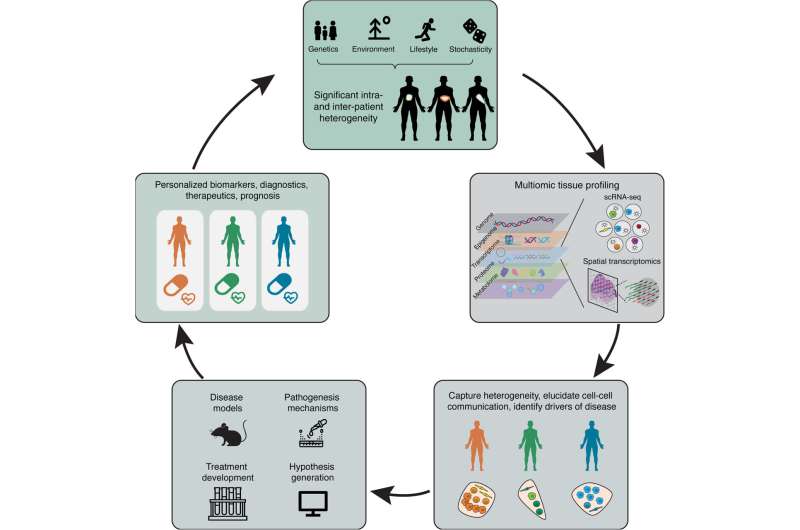This article has been reviewed according to Science X's editorial process and policies. Editors have highlighted the following attributes while ensuring the content's credibility:
fact-checked
trusted source
proofread
Learning the language of cells to beat cancer

Human cells are constantly communicating, and some cells, particularly in cancer, are master manipulators, using these communications channels to persuade innocent bystander cells to collude and participate in tumor growth. If science can better understand how these good cells are "flipped," or induced to go rogue, it would open the door for new treatment options that could save many lives.
Andrew L. Ji, MD, Assistant Professor of Dermatology at the Icahn School of Medicine at Mount Sinai, is working to better understand cutaneous squamous cell carcinoma (cSCC)—a skin cancer that is the second most common cancer in the United States and one that causes substantial morbidity, with a considerable risk for metastatic spread and death.
While most cases of cSCC are caught early and cured with excision, this cancer is more aggressive in people who have received organ transplants, with higher rates of recurrence and metastasis. Treatment options are severely limited in these cases. Further, these patients require immunosuppression, which is linked to cSCC aggression, but the underlying molecular and cellular mechanisms are poorly understood.
In organ transplant recipients, the risk of developing cSCC is 65-fold higher than in non-transplant individuals, and within these tumors, the risk of developing local recurrence and metastasis is at least doubled due to chronic immunosuppression. Treatment options are limited in advanced cases of cSCC, especially in people with transplanted organs, as immunotherapy can be complicated by the risk of organ rejection.
Dr. Ji has discovered an invasive cSCC subpopulation that communicates with non-malignant cell types in the tumor's environment. By profiling tumors from organ transplant recipients using cutting-edge single-cell and spatial technologies, Dr. Ji aims to better understand how this harmful subpopulation emerges in the immunosuppressed setting, aided by crosstalk with these neighboring cells.
Ultimately, his goal is to prevent the manipulative cancer cells from turning harmless cells into new cancer growths, and to improve treatment of cSCC in both organ transplant recipients and patients with advanced cases in the general population.
The research is published in the journal JID Innovations.
More information: Aubrey E. Houser et al, The Use of Single-Cell RNA-Sequencing and Spatial Transcriptomics in Understanding the Pathogenesis and Treatment of Skin Diseases, JID Innovations (2023). DOI: 10.1016/j.xjidi.2023.100198





















